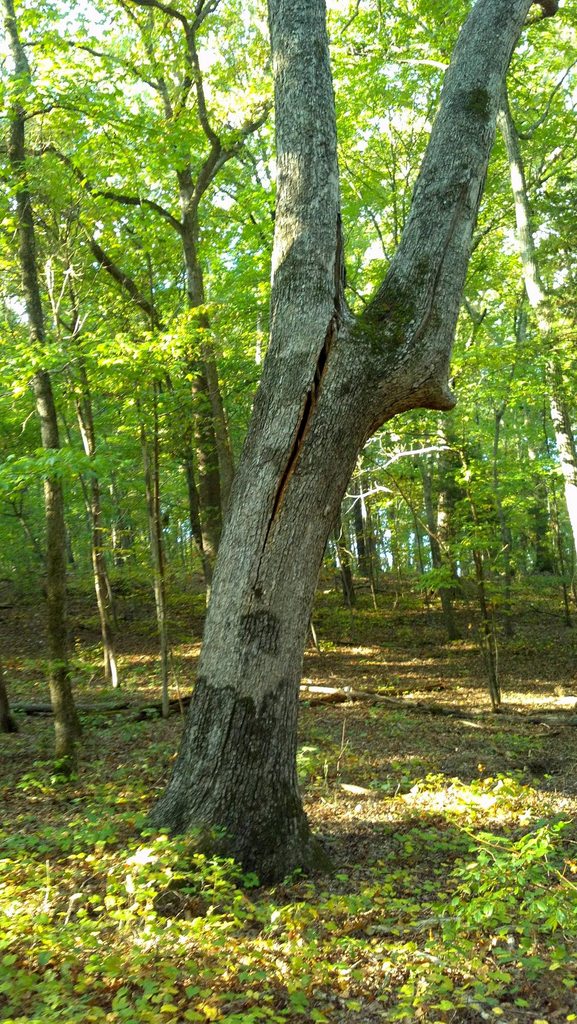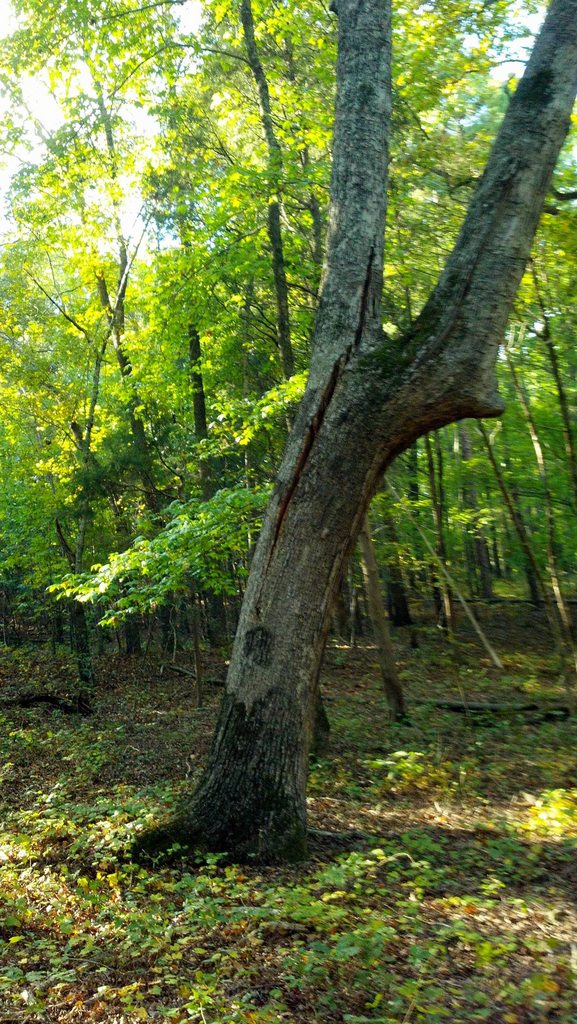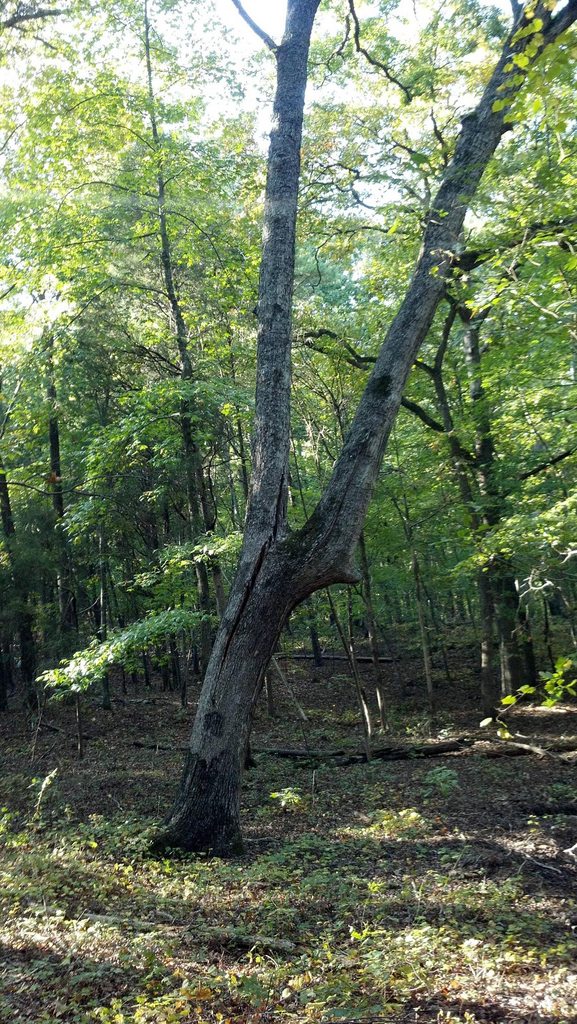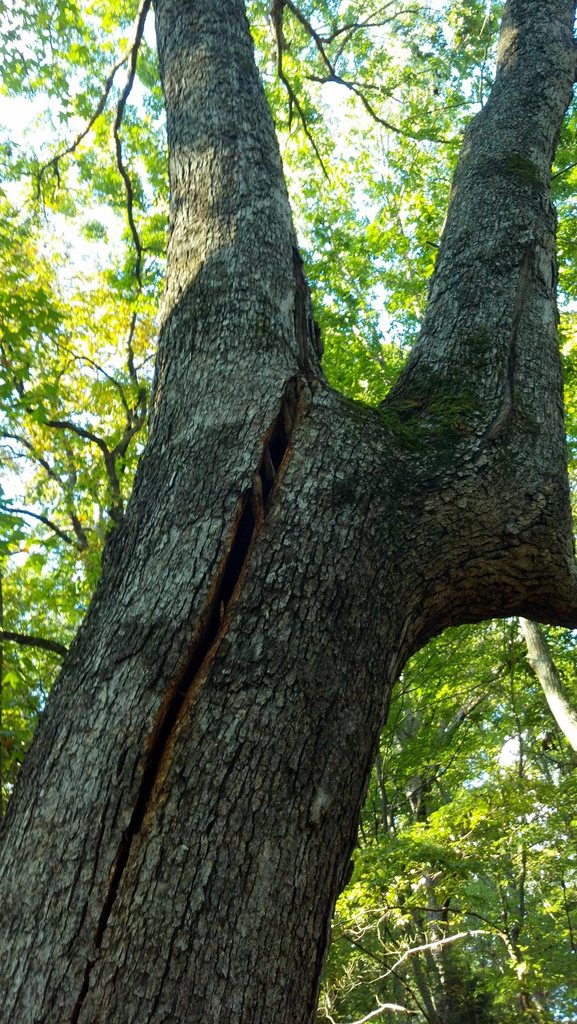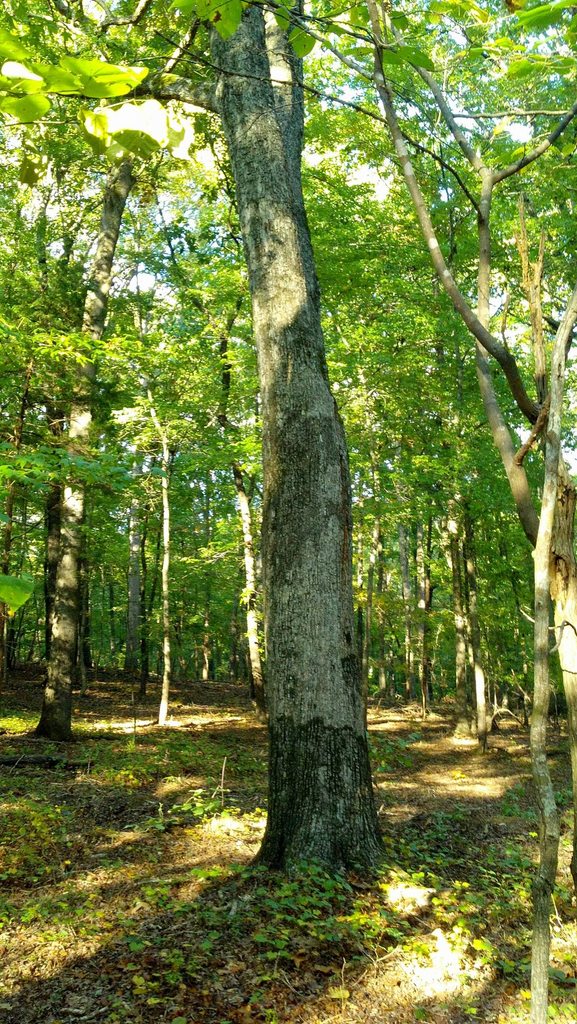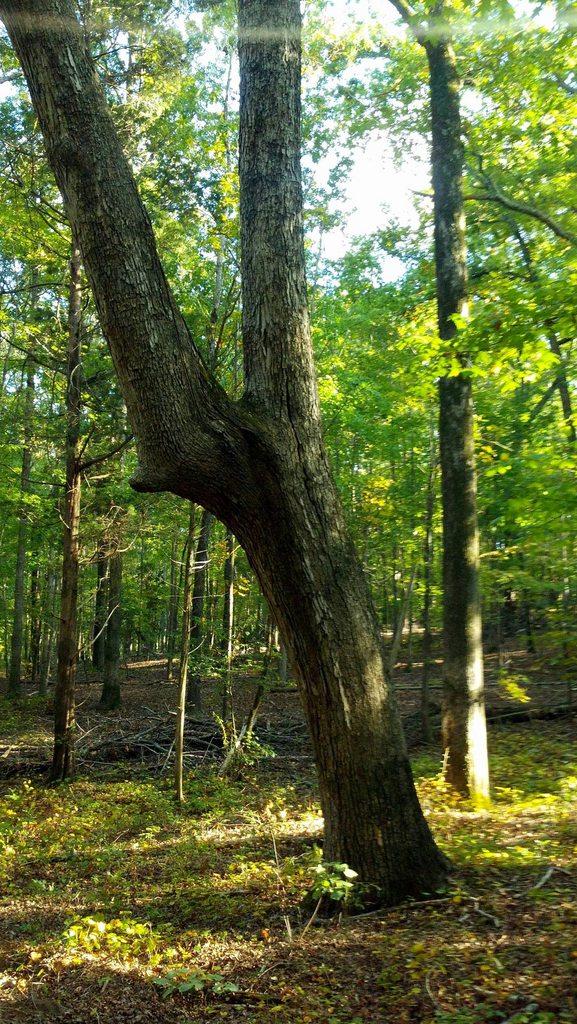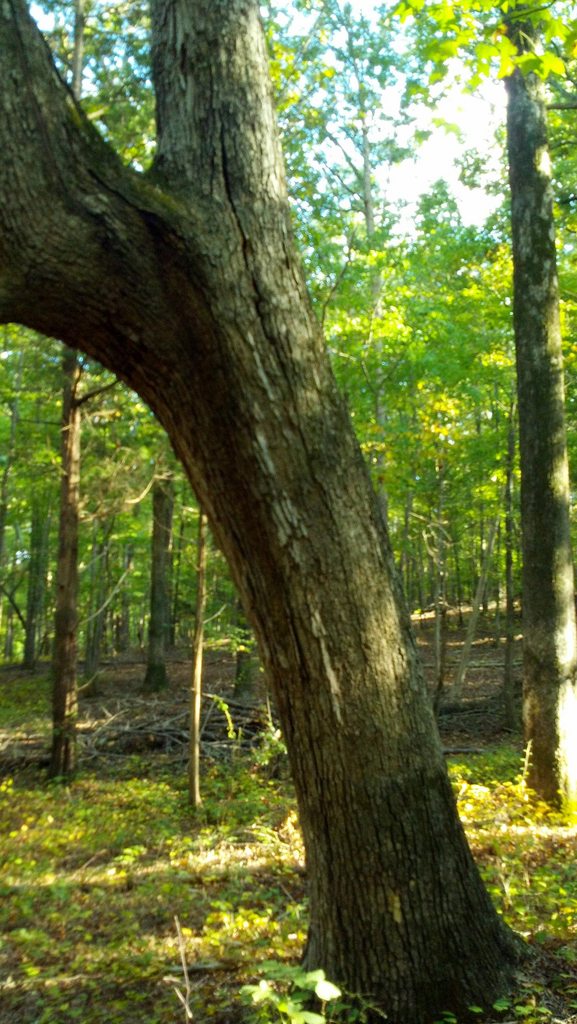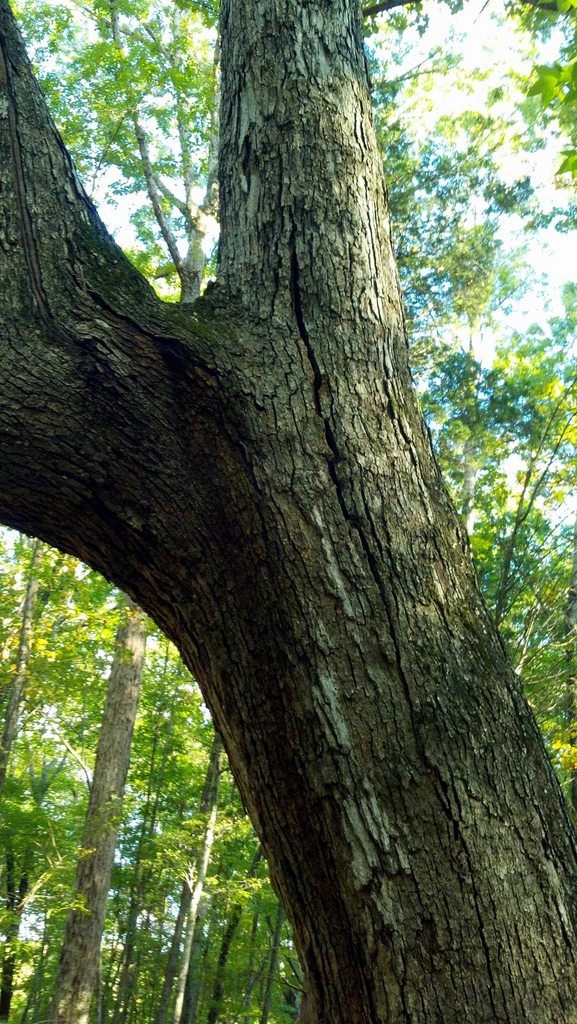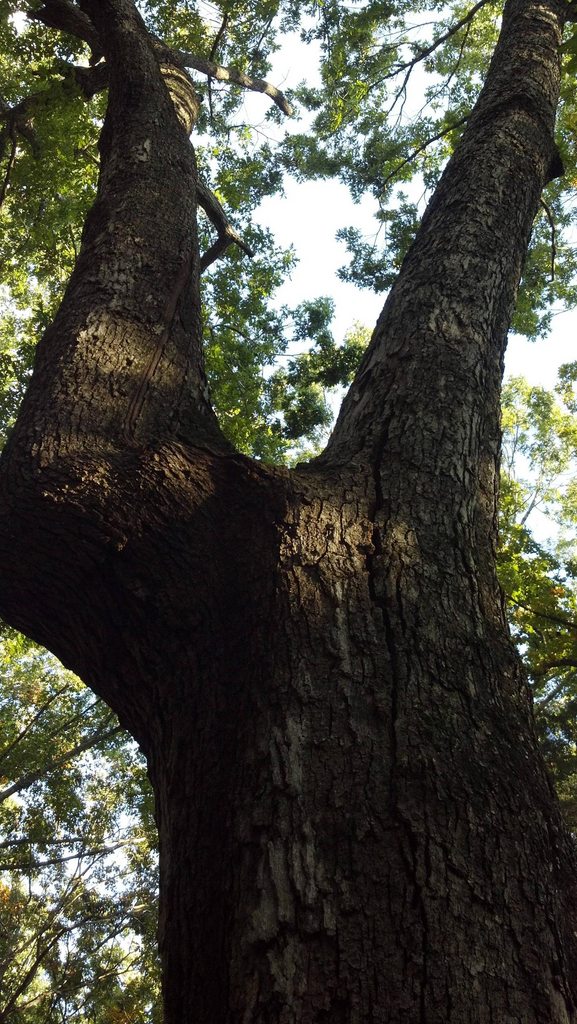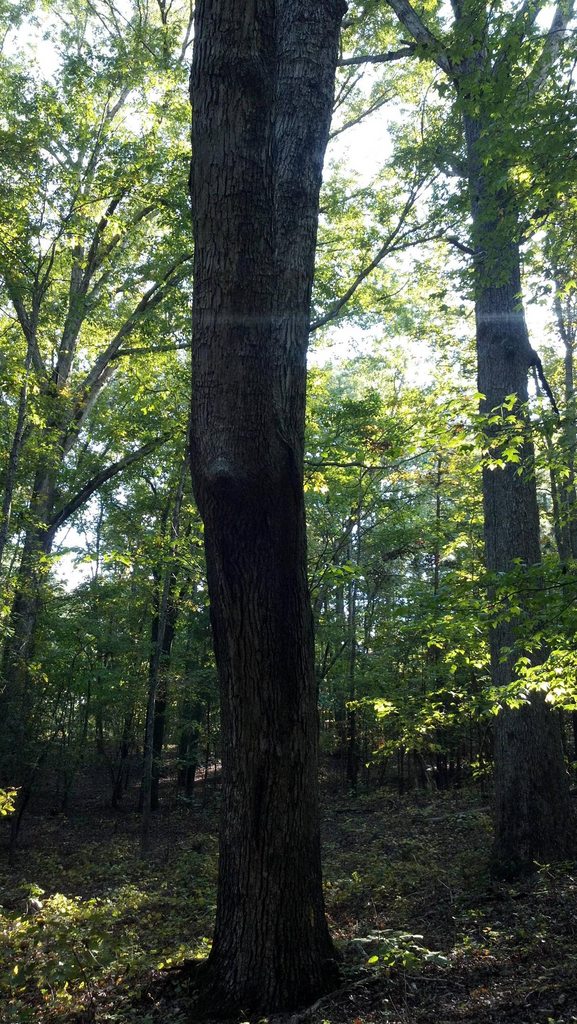Here's my plan:
- wrap a couple big chains around the trunk between the cut and the fork to prevent a barber chair
- make a 90deg open-faced notch (maybe 5" deep) to allow it to fall toward the lean
- bore completely through behind the notch (and about 3" higher than the vertex of the notch) to leave about a 2" hinge
- cut from the bore toward the back, leaving about a 1" strap on the back of the tree
- cut a few inches into the back just below the strap and let it fall
Does that sound like a good idea? What should I do differently? What are the greatest risks here?
I'm nost sure what the chains are for if you are bore cutting, it can't barber chair if are bore cutting, because there isn't any holding wood to barber chair with, but if it makes a person feel better to wrap trees with chains then I guess it doesn't hurt anything.
On the 90 degree face, its easiest to just cut almost straight down partially into one of those swells and then cut level and that will make a very nice shallow 90 degree hinge that will be the strongest, the deeper you go the harder it is to make a good 90 degree, but if its 83 degrees its not that big of a deal, LOL.
Just make all of your cuts level, cutting 3" higher doesn't do anything on a bore cut except make it look like you don't know how to line up a cuts. When you are stump jumping then it does something for keeping the butt from chasing you backwards, but cutting 3 inches higher in a bore cut won't do much of anything except screw with how you made your hinge. The 2" hinge is fine 1-3" is acceptable on that size tree in that situation.
Cut from the hinge to the the back is correct, but as long as everyone and everything is accountable for, then stopping and pulling out and then back cutting a 1" strap higher or lower is a waste of time and is just more time for something to go wrong, just blow out the back and step away, if the lean is heavy 1" isn't exactly going to guarantee holding anything. I've had whole root systems pull up with 6" left. Now if you are stopping and using the back cut on the strap with the tip of your saw as a means of getting farther away from the trunk then that is safe, but I would leave more like 3" and obviously stand to the side.
That is my take on it. I think your greatest risk is not doing all of those steps correctly, for instance don't think a 4" hinge is safer or making sure that you have all of the center bored out, its the big things and over looking the
little things on trees like these that get you killed.
Overall for a good bore cut this is not a hard tree, but if you don't do it correctly then you could have life changing issues.
Back cutting this tree in any form is a guaranted barberchair. Why? because its already barberchaired so it doesn't matter if you "speed cut it", have a chizzel chain, long bars, Coos Bay, T cut or just hillbilly the thing, its going to come apart ............... its already barber chaired or split, so speed cutting or slow nibbling at it makes no difference when you finally reach the point where you have severed enough fibers from the back half and it can no longer hold itself to the stump, its going to come swinging out, that is just the physics of those pre-split trees.
Taking chains and binding the tree so that you can then back cut it is just bassackwards thinking. There is way more strength in bore cutting the tree and letting it hold itself together than trusting some chain or strap, but that is a personal item there. I guess, if a person is dumb enough to backcut a tree like that then its nothing to add chaining it together as a crutch for poor technique. Where as, its much smarter to just bore cut it and let the tree hold itself together, when it wants to go over it will just go over.
Not putting a face cut in this tree is not the smartest either. You can do it, but there is absolutely no advantage to it. It takes a few seconds to get that face cut out of there and provide a relief for that side of the tree so it can just hinge over instead of bind up and then who know what will happen, it could blow the hinge wood and it come back at you or barber chair on the front slab, as if you had a 30 degree face cut and "cam" back at you that way.
If you are going to not cut a face then you are better off just kerf cutting the tree, which is just starting your gunning cut and not stopping until you have blown out the back, I cut like that on certain trees, but that doesn't make it smart, its almost a combination of the unsafe practive of stump jumping and the safer practice of bore cutting put together, it has marginal results, but is technically the fastest way to cut a tree down, because you are severing the entire tree with the least amount of cutting.................. don't do it.
Thats my take on it.
Sam
